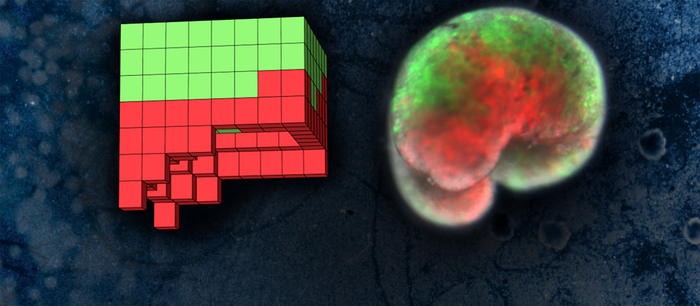They are not traditional robots nor a new animal species, but a new type of programmable organism: they are the 'xenobots', the first living robots, which owe their name to the African frog Xenopus laevis, whose embryonic cells were used to build them.
Reassembled with a supercomputer to perform functions other than those they would naturally perform, frog cells have made it possible to obtain organisms that in the future could travel in the human body to administer medicines or clean the arteries, or they could be released into the oceans as biological sweepers to capture plastic particles.
The result, published on PNAS, the journal of the American Academy of Sciences, is the result of the collaboration between the computer scientists of the University of Vermont, led by Sam Kriegman and Joshua Bongard, and the group of biologists of the Tufts University and the Wyss Institute of the Harvard University, coordinated by Michael Levin and Douglas Blackiston.
It is the first time that completely biological machines have been designed. "We can define them as living robots or artificial multicellular organisms, because they perform functions other than natural ones," observed Antonio De Simone, of the Biorobotics Institute of the Sant'Anna School of Advanced Studies in Pisa.
How they were built
The first step was to use an algorithm that designed on the computer thousands of possible living robots and then select the most promising .
The second step was to take stem cells from frog embryos and leave them in incubation to multiply and specialize in different types of tissues, such as those of skin and heart muscle.
The tissues thus obtained were then manipulated using tiny pincers and electrodes in order to obtain completely new structures compared to those programmed by nature and which, assembled together, have proven to work, to carry out specific tasks and to be able to repair themselves.

The computer project of the living robot (left) and the living robot built using the frog embryonic cells differentiated in skin (green) and heart muscle (red) (source: Sam Kriegman, UVM)
Shapes and functions that do not exist in nature
In this way, De Simone pointed out, "the researchers have reprogrammed living cells 'scratched' from frog embryos, assembling them into a completely new form of life". Basically, he added, these are "aggregates of cells that interact with each other, behaving collectively in a complex and different way from what they would naturally have. They are elementary behaviors, such as moving together in one direction or in a circle".
The living robot thus obtained has the same DNA of a frog, but it is not a frog at all: it is a living form reconfigured to do something new. The real novelty of this work, according to De Simone, "was above all to use an algorithm to generate the behavior and evolution of cells".










Caricamento commenti
Commenta la notizia